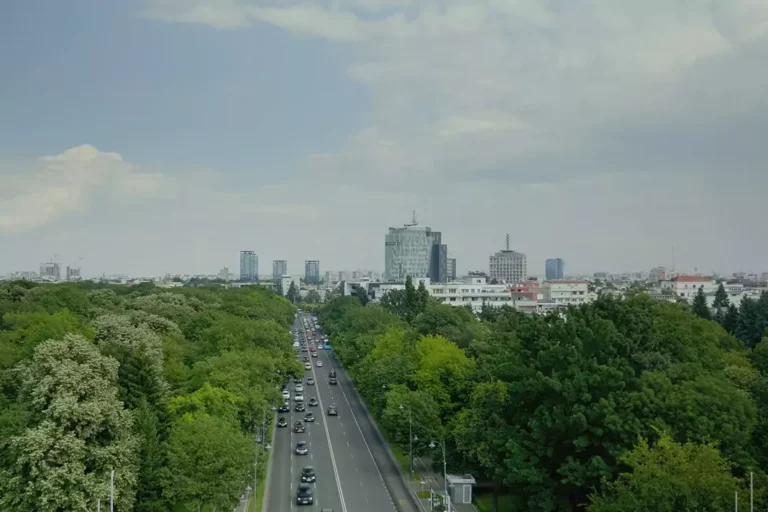Bucharest is facing a growing environmental emergency, with air pollution reaching dangerous levels and traffic emissions accounting for 60% of harmful pollutants, according to the latest State of the Environment in Bucharest report.
The findings paint a stark picture of Romania’s capital, where outdated vehicles, unchecked urban development, and vanishing green spaces are fueling a public health and climate crisis.
Traffic: The main polluter in Bucharest
Road traffic is the dominant contributor to Bucharest’s air pollution, producing nearly two-thirds of the city’s toxic emissions. More than half of the vehicles are over 10 years old, and over one-third run on diesel – amplifying nitrogen oxide and particulate emissions.
Alongside car traffic, large thermal power plants and illegal waste burning add dangerous levels of sulphur dioxide, carbon dioxide, and other toxins to the city’s already compromised air.
According to the report, Bucharest regularly exceeds legal limits for air pollutants, especially in densely populated neighborhoods. Ground-level ozone, a key component of photochemical smog, is also on the rise – posing severe risks to children, the elderly, and people with respiratory issues.
Vanishing green space and urban nature deficit
Urban vegetation is in sharp decline. Since 1990, Bucharest has lost over 500 hectares of green space. Only 60% of apartment dwellers live within one kilometer of a park. The city has just 0.88 trees per resident – far below the EU’s recommendation of three trees per person.
Overdevelopment and poor mobility planning
From 2010 to 2023, more than 268,000 new housing units were constructed – many on former green or industrial land, often without proper infrastructure. While the number of vehicles continues to grow, sustainable transport options remain neglected, as just 1% of residents cycle, and only 1.25% of registered vehicles are electric.
Waste crisis and circular economy stagnation
Bucharest generates nearly 564,000 tons of waste each year, yet only 42% is properly treated. Selective recycling is poorly implemented, and urban agriculture is nearly nonexistent. The city remains heavily dependent on external food sources, with circular economy strategies still largely theoretical.
Climate crisis accelerates: 2024 was hottest year on record
Bucharest is also grappling with the accelerating effects of climate change. In 2024, the city recorded its highest-ever average summer temperature: 27.43°C – almost 6°C above the historical norm. With 80% of its surface covered by concrete and asphalt, Bucharest suffers from an extreme urban heat island effect, worsening health and environmental outcomes.











